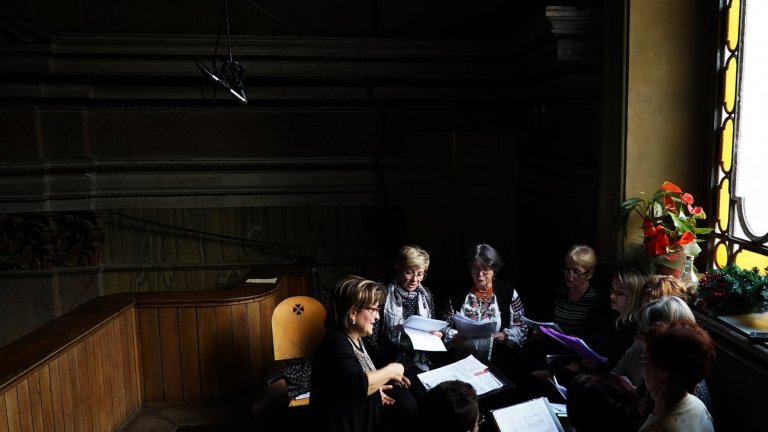
© Blanche LACOSTE / IDEMEC / AMU / UniRoma 2 / EFR / CNRS Images
View the mediaActualité scientifique
Les Journées du patrimoine 2023, les 16 et 17 septembre, offrent une occasion précieuse de se plonger dans notre histoire et notre héritage commun. Le patrimoine constitue également un objet scientifique de premier plan.

© Blanche LACOSTE / IDEMEC / AMU / UniRoma 2 / EFR / CNRS Images
View the mediaCette 40e édition des Journées européennes du patrimoine célèbre en particulier le patrimoine « vivant », à savoir les pratiques, les expressions, les connaissances et les savoir-faire qui se transmettent.
Le patrimoine constitue une passerelle inestimable entre les époques, les générations, mais aussi les continents ; il tisse littéralement des liens à travers l’espace-temps. En ce sens, il est une ressource à préserver, qui, loin de se résumer aux collections des musées ou aux pierres des monuments, est un ensemble de pratiques, de codes, qu’il faut faire vivre et sans cesse réinventer.
Et pour cela, il faut le connaître, l’étudier, le consigner pour mieux se l’approprier. C’est le travail des scientifiques, au premier rang desquels on trouve bien sûr les anthropologues et les archéologues. Mais pas uniquement ! Que l’on songe, par exemple, aux acousticiens qui s’efforcent de saisir ce que pouvait être l’atmosphère sonore d’un château fort au Moyen Âge. En France, comme un peu partout dans le monde, les scientifiques déploient savoirs et techniques pour comprendre et partager ce bien commun avec l’ensemble de l’humanité.
Mais pour l’heure, et le temps d’un week-end, le patrimoine nous ouvre ses portes les 16 et 17 septembre. Préparez votre programme et, d’ici là, plongez-vous donc dans cette sélection de reportages consacrés au patrimoine « vivant » sous toutes ses formes.
Our work is guided by the way scientists question the world around them and we translate their research into images to help people to understand the world better and to awaken their curiosity and wonderment.